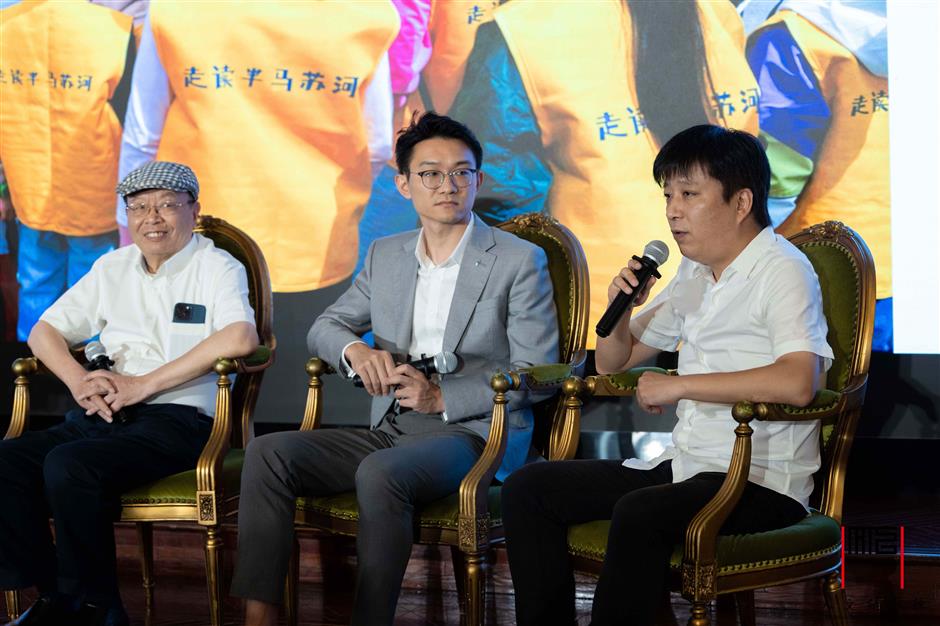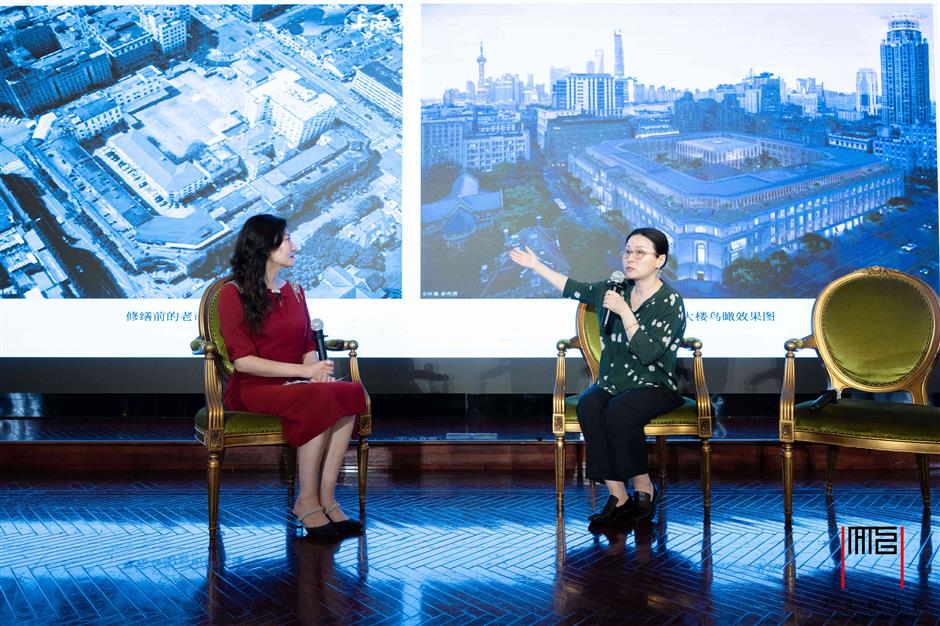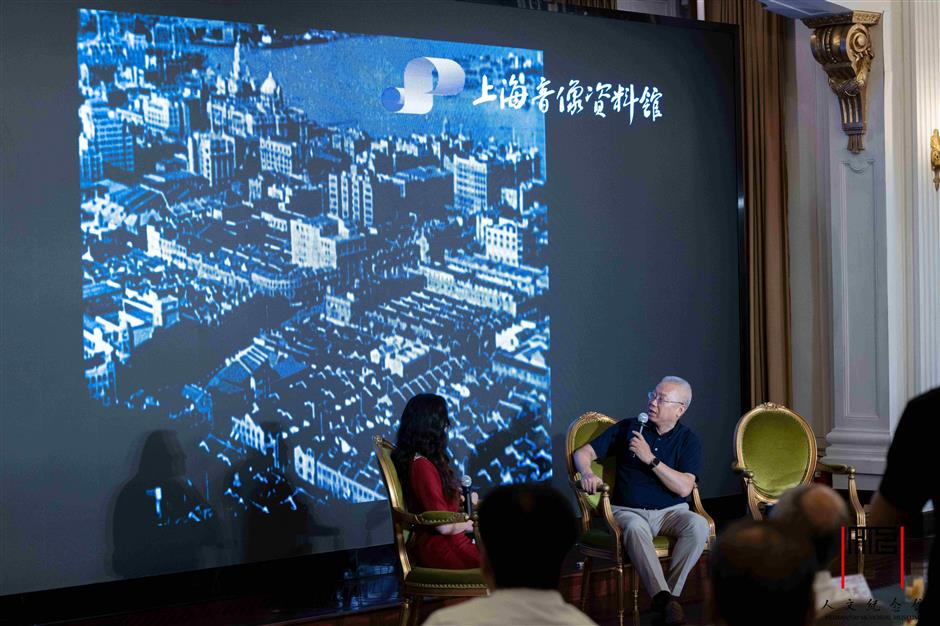 Ti Gong
Ti Gong
Speakers at the annual “Predecessors and City Memory” forum in Huangpu District.
The stories behind historic revolutionary buildings in the city were shared during the annual “Predecessors and City Memory” forum in Huangpu District on Wednesday, with discussions on how Shanghai’s revolutionary culture and haipai (Shanghai-style) culture can engage with young people and be passed from generation to generation.
A vlog took participants into the Yangshupu Power Plant beside the Huangpu River during the forum.
During the liberation of Shanghai, the power plant, as the last area to be liberated, witnessed a series of battles and anti-espionage struggles.
It is now the Yangshupu Power Plant Relics Park, where visitors can enjoy coffee by the towering chimneys and admire art installations in a perfect example of how Shanghai’s “industrial rust belt” can be transformed.
 Ti Gong
Ti Gong
Comparison photos of old Shanghai Municipal Government Building before and after restoration are pointed out.
“In the battle of Shanghai’s liberation, the city not only continued to supply electricity and water, but also protected the factories, institutions, and warehouses that were about to be taken over, successfully maintaining its normal operation under efforts from various sides, and the power plant is a representative of this,” said Zhang Yun, honorary president of Shanghai Society of History of Communist Party of China.
Another old building attracting attention is the old Shanghai Municipal Government Building. This century-old building in Huangpu witnessed the handover ceremony of the old and new governments after the liberation of Shanghai in 1949, becoming the offices of the city government until 1956.
Wang Min, director of the comprehensive research department of the Shanghai Audio-Visual Archives, used several historical images to illustrate the moment when the first five-star red flag in Shanghai was hoisted at the building.
 Ti Gong
Ti Gong
Old photographs are shared at the forum.
The building is a symbolic landmark in the history and memory of Shanghai, said Wang.
In 2014, a renovation project was launched and, after 10 years, work on the building is almost complete.
Zheng Ning, who heads the project, talked about the restoration using a number of comparative pictures.
The building is about to open to the public with a new look, presenting more functions and formats, and creating an attractive urban public space, Zheng said. “The restoration and respect for historical buildings are more important in reflecting the inheritance of Shanghai’s historical culture behind it.”
The event, hosted by various bodies such as Shanghai Society of History of Communist Party of China and Shanghai Humanism Memorial Museum at Shanghai Fushouyuan Cemetery commemorates the 75th anniversary of the founding of the People’s Republic of China and the 75th anniversary of the liberation of Shanghai.
,https://www.shine.cn/news/metro/2407101793/